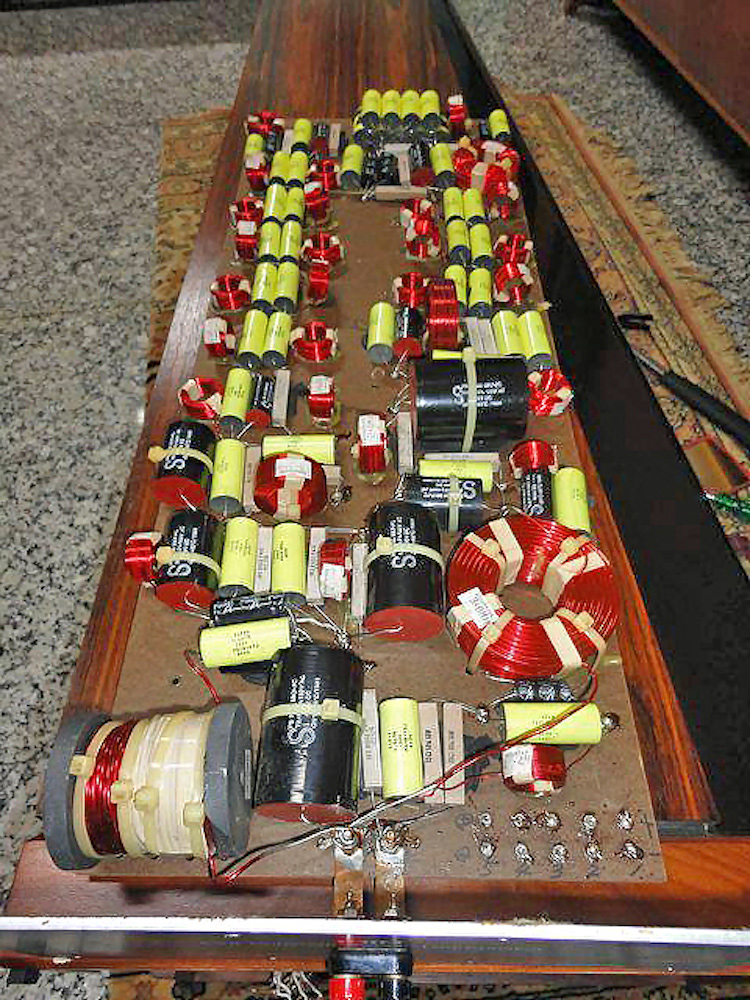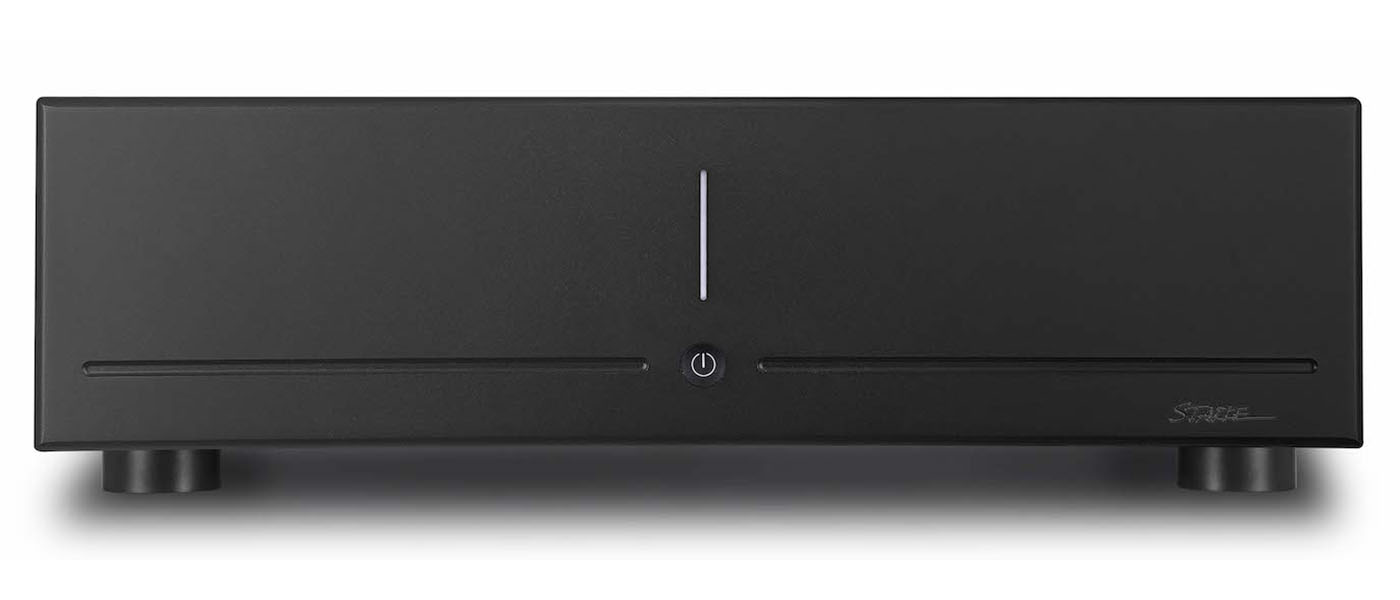
The AD4.320 amplifier is also unique, in my experience, in using a conventional, but very heavy-duty analog power supply with dual 30-amp transformers to power the output modules. Starke Sound claims that the AD4.320 combines the high efficiency of Class D circuitry with the warmer and more accurate sound of Class AB designs. Have they succeeded? Read on!
Four-channel power amplifiers are somewhat unusual. Most audiophile amps are one or two channels per chassis. Home theater amps have three, five, seven, or more channels to match the number of available channels on the movie soundtrack. In this review, I decided to strongly test the Starke Sound claim of audiophile performance in stereo from their Class D modules. All other manufacturers that I’m familiar with purchase their Class D amplification modules from other companies (B&O ICE modules are common, as are Hypex NCore modules) and then build their product around that company’s pre-selected, modular output cards. Starke Sound doesn’t do this. Their NS-600 Class D modules are designed and built in-house.
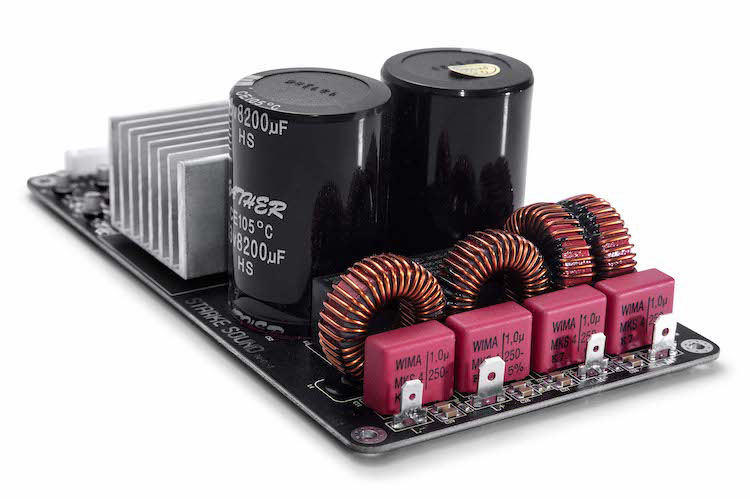
This would be academic if the NS-600 modules sounded like everyone else’s – but they don’t. The Starke AD4.320 sounds very much like a tube amplifier in the midrange, but with the speed, detail, and control of a high-powered Class A/AB amplifier in the treble and bass.
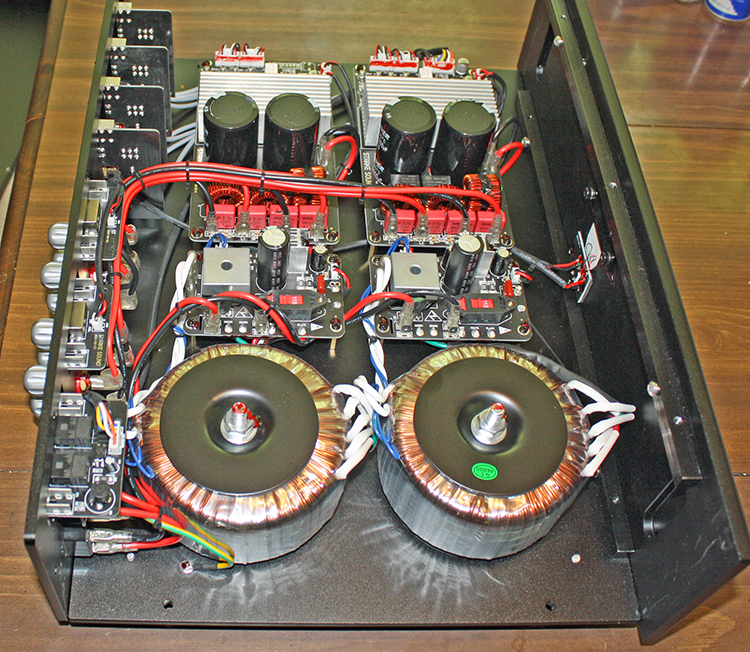
STARKE SOUND AD4.320 POWER AMPLIFIER
- The Starke AD4.320 offers very high power in individual or bridged modes
- The amplifier offers two, three, or four-channel operation
- The amplifier voicing is the best I’ve heard
- The amplifier voicing is consistent in both individual and bridged modes
- The amplifier is available only in black
- The 28-pound weight is very light for the power available
- Compact size for a multi-channel amplifier
- Cool operation
Having used Class D amplification products before: Crown XLS series, primarily, but also the excellent Emotiva PA-1; I was honestly just not expecting much from the Starke Sound AD4.320 power amplifier. But from the moment I turned it on, I knew it was something special. The manufacturer has voiced this amplifier in such a way as to enhance detail, emphasize speed, and extend bass.
Secrets Sponsor
The Starke Sound company was founded in California in 2009 to “combine state of the art technology with an elegant, contemporary design aesthetic.” And although design aesthetics may improve the spouse acceptance factor for speakers, amplifiers are generally immune to such considerations. Amplifiers are “out of sight and out of mind” from a visual standpoint and ONLY their sound and durability matters. And the sound is where Starke has staked their claim for the AD4.320. See the “In Use” section for details.
Product Name:
AD4.320 Power Amplifier
Construction:
Hybrid NS-600 module with analog power supply and Class D output
Channels:
2, 3, or 4 (user-selectable)
Sampling Rate:
600kHz
Output Power:
In 4-channel mode: 225 wpc @ 8 Ohms
320 wpc @ 4 Ohms
In 2-channel mode: 430 wpc @ 4 Ohms (Balanced Mode)
650 wpc @ 2 Ohms (Balanced Mode
Gain:
23dB
Frequency Response:
5 – 100kHz (-1.5dB)
Output Current:
16.5 Amperes (single ended) / 33 Amperes (Balanced Mode)
Signal / Noise Ratio:
112dB (A-weighted)
Total Harmonic Distortion:
<0.04% @ 1kHz / 320 watts / 4 Ohms <0.08% @ 20kHz / 320 watts / 4 Ohms
Inputs:
4 single-ended RCA + 4 XLR Balanced
RCA Input Impedance:
100k Ohms
XLR Input Impedance:
200k Ohms
Input Sensitivity:
2.8 VAC
Output Terminals:
4 pairs custom beryllium copper binding posts
Output Impedance:
0.136 Ohms (5 – 100kHz)
Minimum Load Impedance:
0.8 Ohms
Heat:
114 BTU / Hr. (at maximum output)
Fan Cooling:
No
Power Consumption:
8W (standby) / 14W (idle) / 1,500W (Maximum)
Control:
12VDC Trigger & Output
Cabinet:
Black Aluminum
Size:
17.7 x 5.6 x 13.4 inches (WxHxD)
450 x 142 x 232mm (WxHxD)
Weight:
26.8lbs / 12.2kg
Shipping Dimensions:
21.5 x 9.1 x 16.9 inches (WxHxD)
545 x 232 x 430mm (WxHxD)
Shipping Weight:
29.8lbs / 13.5kg
Price:
$1,399
Warranty:
3 years
Manufacturer:
Starke Sound
Website:
Company Directory:
SECRETS Tags:
power amplifier, multi-channel, solid-state, starke ad4.320, 2020, class d, review 2020, amplifier review
The Starke AD4.320 Power Amplifier is an unusual product. Multi-channel amplifiers are normally offered without bridging capabilities but the AD4.320 takes a different approach. The four available channels can be configured as two, three, or four discrete channels via bridge switches on the back panel. This makes the amplifier more flexible than the usual multi-channel amp, and offers (highly unusually) two-Ohm stability, even in bridged mode!
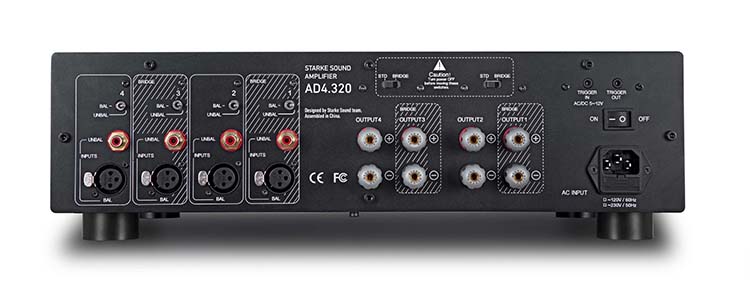
To make the AD4.320 so flexible, Starke Sound uses not one but two toroidal transformers and two stereo Class D modules in the same chassis. Conventional audiophile wisdom is that Class D amplification, while offering the benefits of cool operation and high power efficiency, is just not good-enough sounding for home audio use. And up until recently, pro amplifiers from such manufacturers as Crown and others proved the conventional wisdom. However, newer Class D amplification units like Hypex’s NCore and Emotiva’s PA-1 amplifiers have shown that the best of Class D amplification CAN indeed compete with Class A and AB amplifiers on the basis of audiophile sound quality.
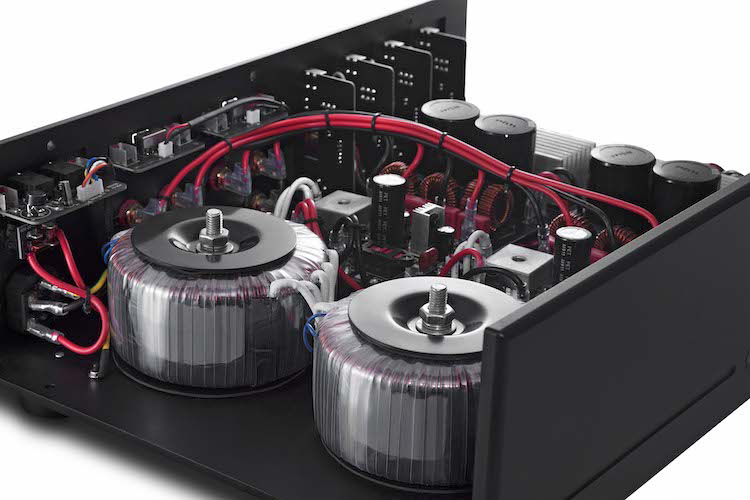
Since I had previously thought of Starke Sound as a loudspeaker manufacturer, the high quality of this power amplifier is an even greater surprise.
The Starke AD4.320 Power Amplifier comes well packed, in a protective sleeve; and with a spec-sheet, owner’s manual, and warranty card. The owner’s manual clearly describes how to configure the amplifier, and users (as always) should review the manual.
Most of the power amplifiers I have owned that offered bridged operation required that a bridging switch be activated and that the speaker load be connected between the two positive (red) speaker terminals for the two bridged channels. In other words, no connection to the negative (black) speaker terminals was normally used.
But the Starke amplifier, by contrast, uses internal switching such that bridged operation requires speaker connection to the positive AND negative terminals of the single bridged channel. The adjacent channel terminals are not used at all. This is unique, in my experience, although I understand it is very common for car audio. In any case, Starke Sound has dummy-proofed this amplifier by disconnecting the terminals of companion channels in bridged mode, so that even if the user mis-wires the outputs, the amplifier will not be damaged.
The amplifier internals show a clean layout, high-quality parts, and heavy-duty transformers for power supply independence. The high parts quality should contribute to long-term durability.
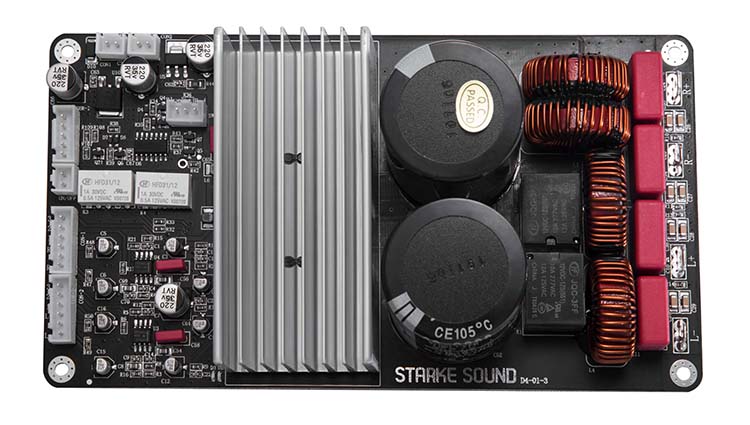
The AD4.320 can be run as a two, three, or four-channel device. The options are as follows:

In four-channel mode, one can run up to four different speakers.
In three-channel mode, a high-power bridged channel can be used to drive a center speaker, and the remaining two independent channels can run the right and left front, side, or rear speaker pairs.
In two-channel mode, a pair of speakers can be powered with:
- Two of the four available channels with the other two idle.
- Vertical loudspeaker bi-amplification with all four channels used – a channel apiece for the low and high-frequency sections of each speaker (this assumes four terminals on each speaker and removal of the speakers’ terminal jumpers).
- High-power bridged operation with two of the four channels contributing to the other bridged pair.
What is unique, to my experience, about the Starke Sound AD4.320 amp is that no matter how you configure it (bridged or not) the voicing remains the same! All previous amplifiers that I’ve owned or reviewed changed their sound significantly in bridged mode. But with the Starke AD4.320, I could not tell by listening whether the amplifier was bridged or not.
Secrets Sponsor
Setup for the Starke Sound AD4.320 was simple. The 28-pound chassis was light enough to lift, the dimensions fit my equipment racks with room to spare, and the small amount of heat produced by the amplifier was negligible. I also took the option of connecting my DAC to the unbalanced inputs of each channel and my Blu-ray player to the XLR inputs of each channel. By doing so, I could effectively use the power amplifier for source switching and eliminate a preamplifier from the signal chain completely. Of course, to do this, both sources were required to control their own volume.
The AD4.320 amplifier uses but 14 watts at idle, and when turned to standby mode (only the 12VDC trigger monitored), the power consumption drops to 8 watts.
- Mac Mini running Roon server software from HDD library
- Audioquest Dragonfly Black DAC (unbalanced output & variable volume)
- Audio-gd HE-1 solid-state preamplifier (balanced output mode)
- Audio-gd HE-1 Vacuum XLR tube preamplifier (balanced output mode)
- Yamaha Blu-ray player (with either of the two above preamplifiers)
- Emotiva T2 loudspeakers
- Tekton Design Double Impact loudspeakers*
*to be reviewed as an addendum to this review
Note: All listening notes were compiled using Emotiva T2 loudspeakers.
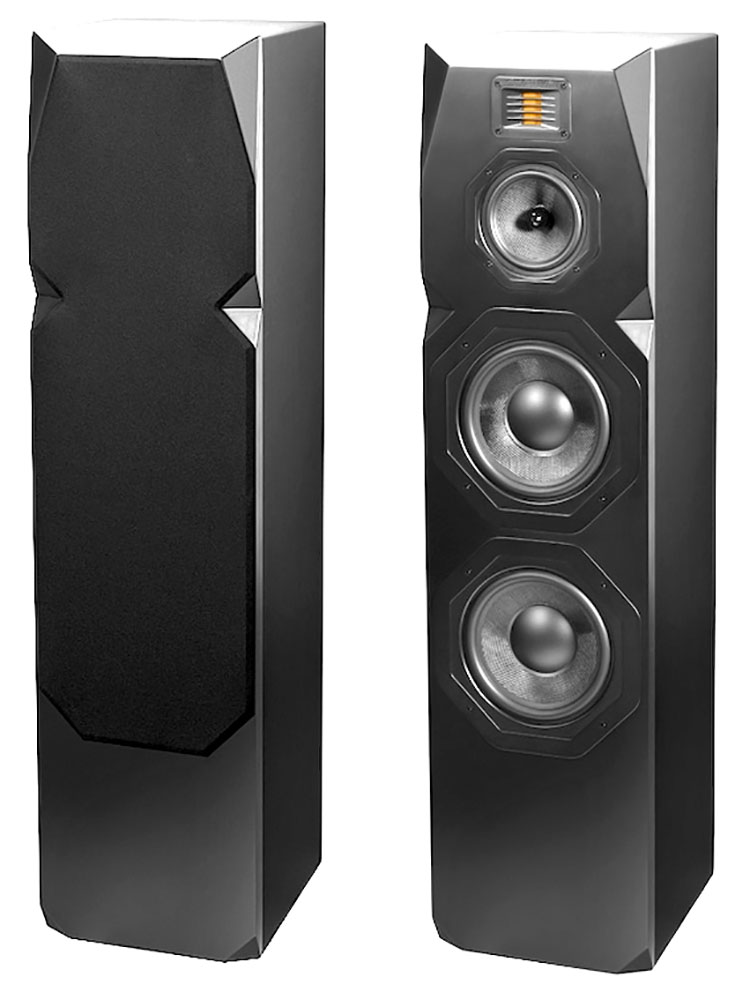
In two-channel mode (2 channels used, two channels idle – unbalanced inputs)
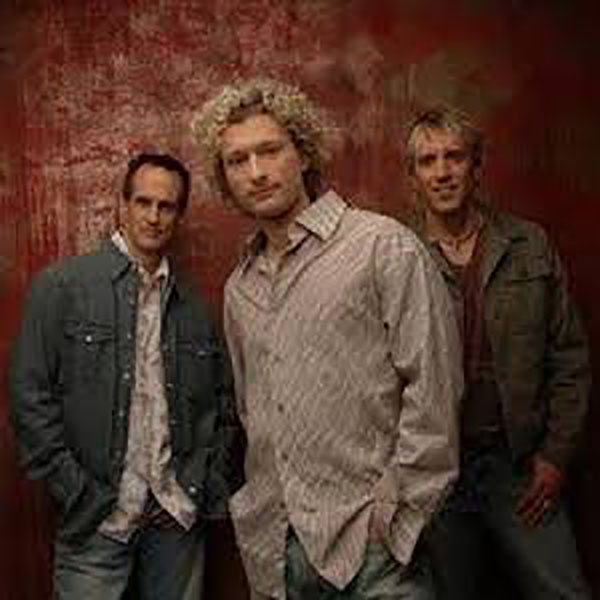
How Great Thou Art, Valor Music Group, 2006, “What It Took”
This track uses a synthesizer to double the bass voice an octave lower than was actually sung. This will challenge almost any set of speakers (and if you’re using a subwoofer, it will clearly tell you how well-integrated – or not, the sub is with the main speakers). This track will also challenge the bass response of many amplifiers, and if they roll off the bass, you will know it. The Starke amplifier was both tight and well defined even with the lowest notes.
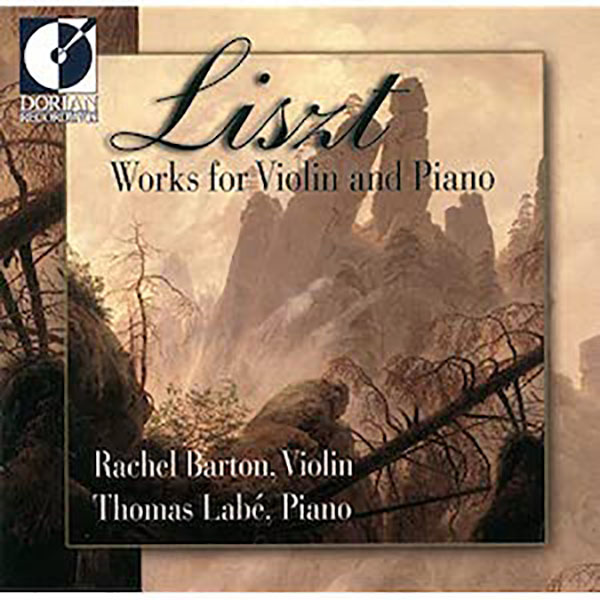
Hungarian Rhapsody for Piano No. 2 (the “original”) in C sharp minor (I & II), S.244/2 (LW A132/2): Cadenza, Thomas Labé, Franz Liszt
A well-recorded piano is a very good test of the linearity and dynamics of any power amplifier. This performance is a particular favorite of mine, from the Dorian album “Ferenc, Liszt: Works for Violin and Piano.” What strikes me about the Starke amplifier’s reproduction of this work is the dynamic contrasts. Many amplifiers (most?) seem to have a narrow envelope between their minimum volume and maximum volume at a specific source volume control setting. In other words, the music is somewhat compressed, even if the source material is very dynamic. The Starke amplifier excels at giving the piano in this piece its dynamic voice. The dynamics of the performance are presented in full by the Starke amplifier and it definitely enhances the perception of hearing a real piano in a real room.

Celloopa, The Piano Guys, “Uncharted”
A strong bass foundation starts this track, and some amplifiers just don’t provide the initial rise time that makes the bass notes’ pitch evident from the first. In other words, some amplifiers that I’ve heard seem to blur the entry of the notes. The Starke amplifier doesn’t blur at all. The Starke’s speed ensures that each note is distinct and that you can easily discern the instrument that is being played.
In two-channel vertically-bi-amplified mode (4 channels used, speakers vertically bi-amplified):
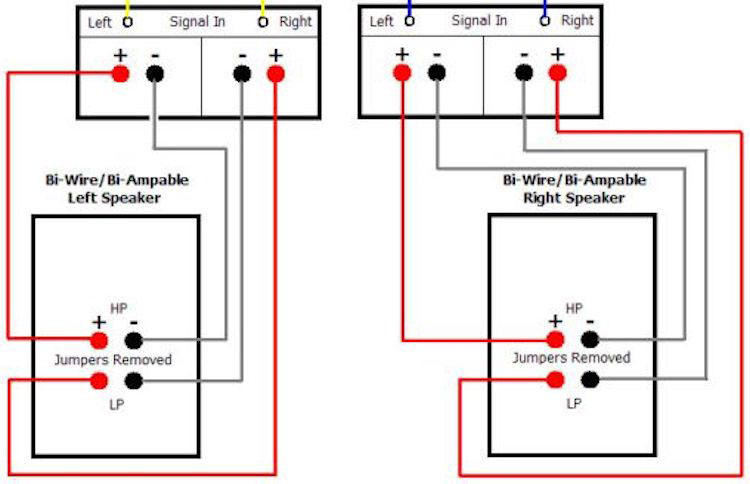

Kiss Me, Sixpence None the Richer
This is just a joy to hear through the Starke amplifier! The strummed guitar that opens the song is clear, clean, and sounds like a real guitar. The singer’s voice is open and sweet. Some amplifiers, again, seem to homogenize the sound of this track, but the Starke amplifier makes it sound like music – not like stereo.
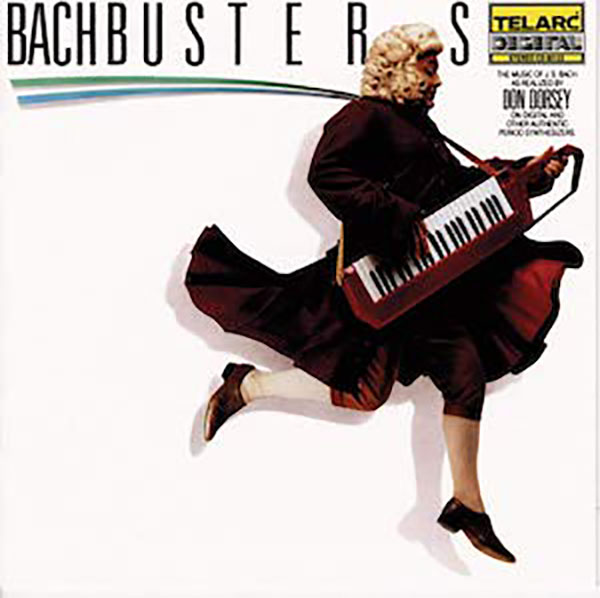
Toccata and Fugue in D-Minor, Don Dorsey, “Bachbusters”
OK – leaving the acoustic fields and venturing into electronica, the synthesizer’s bass notes in this track plumb the depths down to 16Hz. Most speakers won’t go this low (nor will most subwoofers), but the doubling of that note (32Hz) should be easily audible on most speakers if the amplifier is flat that low, and if the speakers will take it. The Starke amplifier belts out the fundamental tone as intended by Mr. Dorsey and the Emotiva T2 speakers do a credible job of reproducing the 32Hz double in my room. This may or may not be the case in your system, depending on the room and the speakers. But any shortcoming here can’t be attributed to the Starke amplifier!
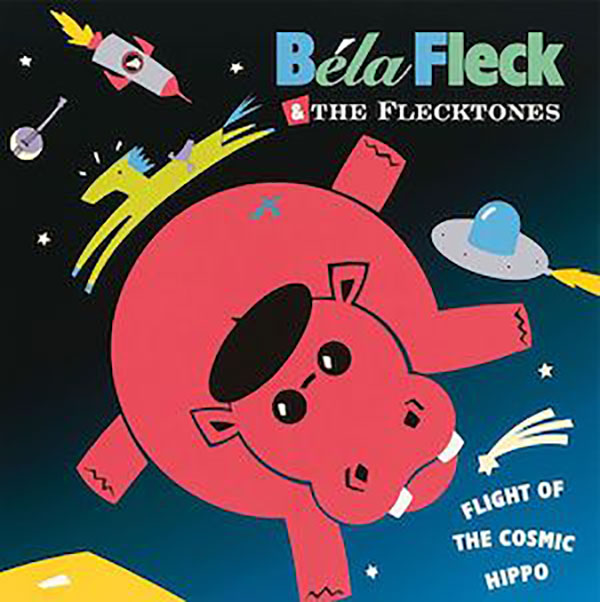
Flight of the Cosmic Hippo, Béla Fleck and the Flecktones, 1991
Deep, deep bass opens this track and is sustained throughout the song, with the banjo floating over it. Do your speakers have intermodulation distortion (caused by a single driver trying to simultaneously reproduce two or more tones with one modulating the other)? This track will tell you. But if you do have distortion here, the Starke amplifier is not the cause. My speakers reproduced this track more cleanly than I’ve heard with many other power amplifiers.
In two-channel bridged mode (all 4 channels used, but in high-power, bridged mode):

One Night in Rio, Louie Austen, “Best of Hôtel Costes”, (Stéphane Pompougnac)
This is the track to test for transient response. The song has a wide variety of sound effects in the background with Mr. Austen’s voice to the fore. The amplifier’s control of the speaker drivers will determine the audio verisimilitude of the sound effects. Whatever the damping factor is on the Starke amplifier, it is well in excess of what is required to make this song sound startlingly realistic.

Themes From Pirates of the Caribbean, The Piano Guys, “Uncharted”
The layered instrumentation on this track should sound as if window after window is being opened as the sound becomes more and more expansive. Amplifiers that compress this track significantly reduce the intended effects. The Starke amplifier does better than any I’ve heard in emphasizing the intended “wow factor” of the music.
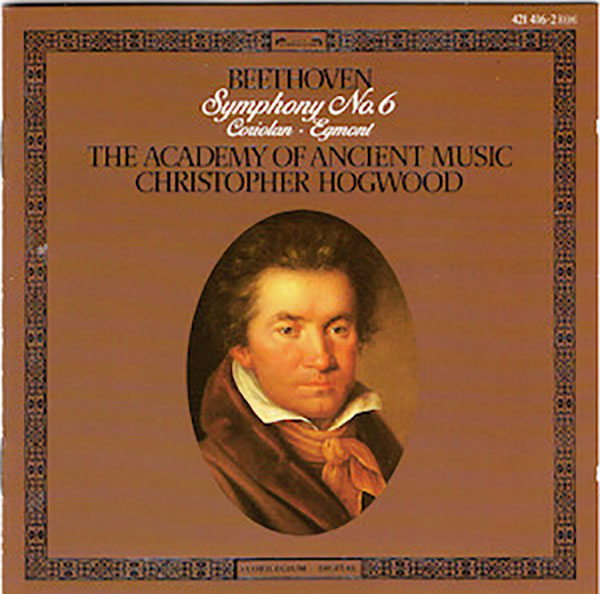
Beethoven Symphony No. 6, The Academy of Ancient Music (Christopher Hogwood)
This is one of my favorite performances of this piece, and I look for depth and width of imaging. If I were to criticize the Starke amplifier at all, it would be regarding image width and depth. I’ve heard better from my speakers, but only with tube amplifiers. The Starke amplifier can’t quite match the tube amps for imaging, but its second-place finish is still close.
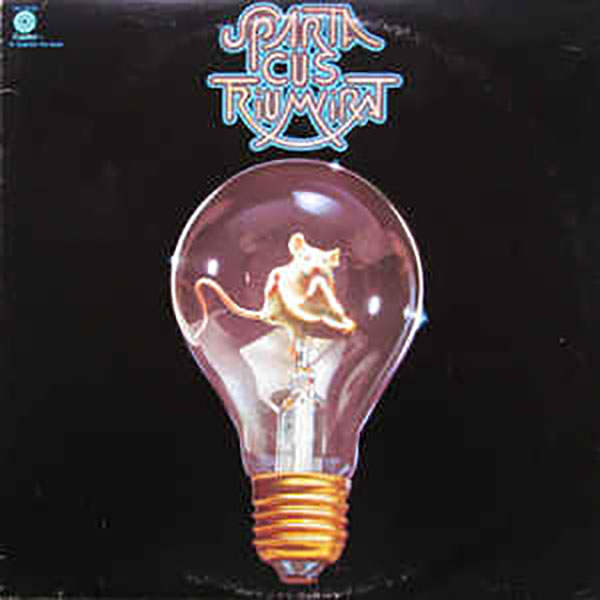
The Hazy Shades of Dawn by Spartacus, 2002, Triumvirat
This is just fun, plain and simple. I haven’t heard this in many a year, but the Starke amplifier does such a good job of making music so enjoyable that I cued this up and really enjoyed the experience. The highest praise I can give the Starke amplifier is that I didn’t want to stop listening to it.
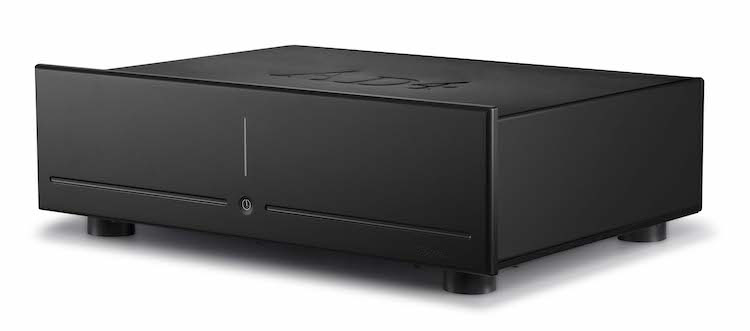
The Starke Sound AD4.320 four-channel power amplifier is not only reasonably priced but also competes with the best amplifiers I’ve heard at any price.
- Amplifier speed exposes details starkly (pardon the pun…)
- Flexible configuration allows the user to maximize the amp’s versatility
- Identical voicing in both bridged and un-bridged modes
- Good mechanical layout and high-quality parts should result in long-term reliability
- Pricing is a bargain for this level of performance
- Low heat dissipation
- Proprietary, high-speed amplifier modules
- Optional color other than black
- Connection options shown in tabular format
- (As you see, I’m grasping for things that I think need improvement!)
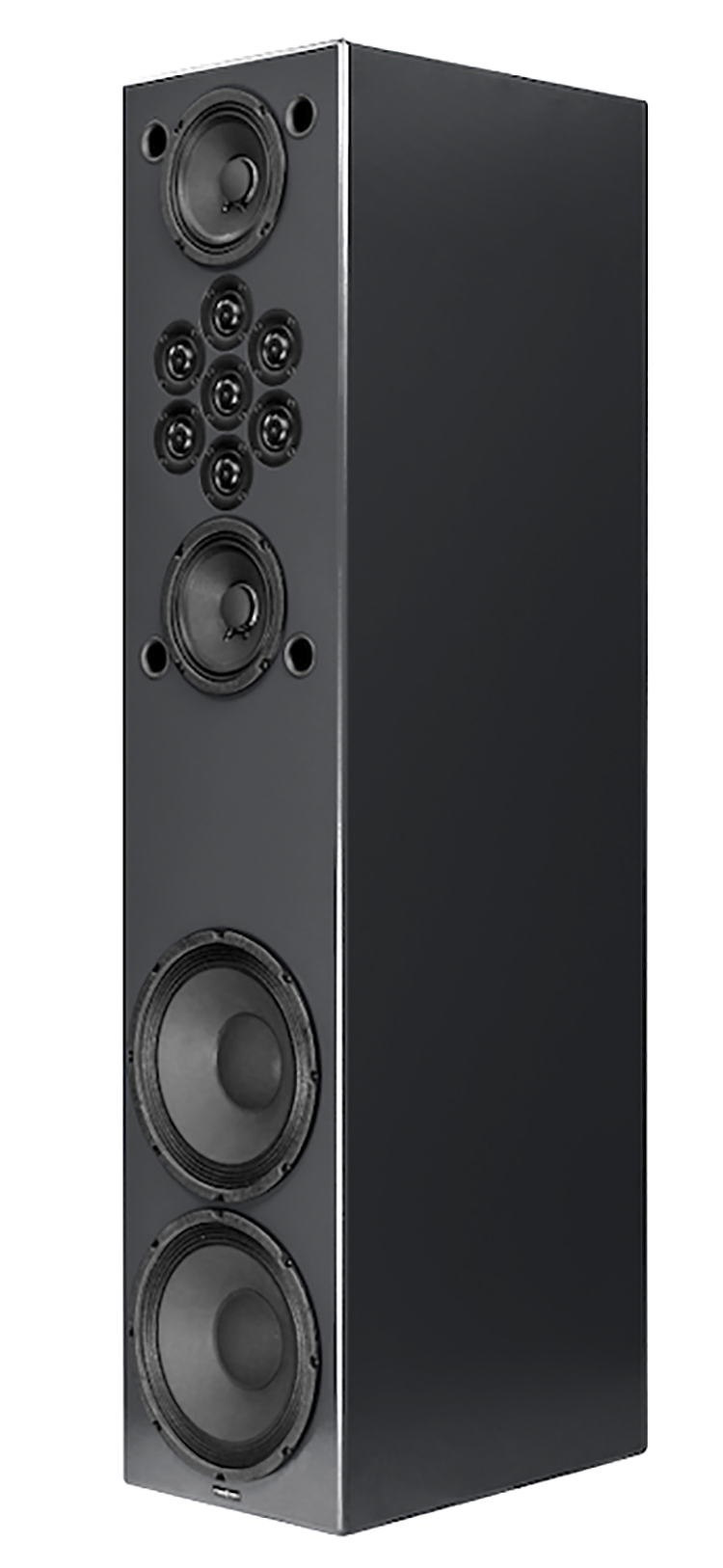
Based on what I’ve heard, I must give the Starke Sound AD4.320 my highest recommendation. BUT, and this is a significant reservation, at the time of this review, I’ve heard the amplifier ONLY with my personal pair of Emotiva T2 loudspeakers. Is it credible that that particular amplifier/speaker pair just happened to exhibit Heavenly Synergy?
To test this theory, Starke Sound has generously agreed to extend the loan of this amplifier until I receive a pair of Tekton Design “Double Impact” speakers. If the AD4.320 amplifier is as impressive with the Tektons as it has been with the Emotiva speakers, then ladies and gentlemen, we have a winner! After hearing that pairing, this review will be updated.
Honestly, if Starke Sound priced this amplifier at three to five times its actual price, audiophiles would be more likely to take it seriously and give it the consistent rave reviews that it deserves. Its performance justifies that level of consideration. But if you want a sound-for-the-money bargain in the here and now, look closely at the Starke AD4.320!
THE STARKE SOUND AD4.320 POWER AMPLIFIER WITH THIEL 5i SPEAKERS:
An audio amigo offered the chance to listen to the Starke AD4.320 amplifier with some of the hardest-to-drive speakers in the world, his big Thiels. Let me tell you about the Thiel 5i. It is a five-way, six-driver tower with a crossover that uses 87 elements (implemented with 114 components). Their impedance drops to 2 ohms in the bass. Their “rated sensitivity” of 87dB/2.83V/1m is actually equivalent to 82dB when the impedance is taken into account.
This speaker is essentially “Shiva, the destroyer of receiver worlds.” Woe be to the arrogant user that tries to drive these with his AVR! In fact, there are a LOT of “audiophile” amplifiers that will QUICKLY go up in smoke when presented with this speaker’s “nominal 3-ohm” impedance as well. In short, none but muscular, arc-welder amps need to apply AND they’d better sound GOOD doing it because the Thiel’s 23-20kHz frequency response (+/- One Decibel) and +/-5-degree phase response will quickly reveal any poseurs!
And onto this killing floor wanders the Starke AD4.320 power amplifier priced at about $1,000. A highly unusual design with a conventional power supply and custom-designed and manufactured Starke class D modules for simultaneous output into as many as 4 channels. I’m kidding, right? A relatively cheap class D amp from a virtually unknown manufacturer is going to challenge the top-of-the-line Krell, Quicksilver, and Crown amps that normally drive these Thiels?
Really?
REALLY?!?
Well, the bottom line is: The Starke AD4.320 held its own and sounded good doing it!
So how did the AD4.320 sound with the Thiels? After the first few seconds, and even with the amplifier stone cold, the speakers’ owner spontaneously commented, “this is a really good-sounding amplifier!” He normally plays his speakers with either the big Krell or, more frequently, a highly modified Crown PSA-2.
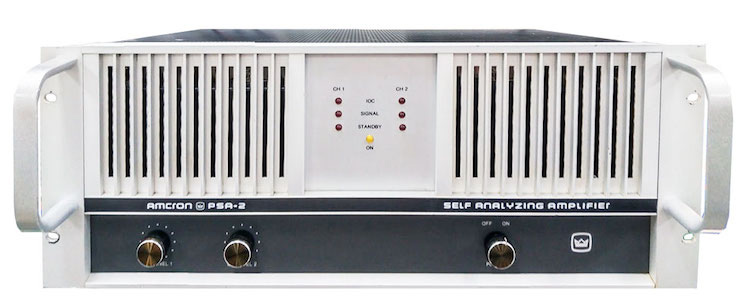
The system has been equalized and tweaked to sound its best with the Crown, and some of those tweaks that benefitted the Crown likely worked against the Starke amplifier. You wouldn’t expect the Starke to do its best under such circumstances, yet here was the consistent voicing of the AD4.320 despite the handicaps. Overall, it sounded very good with the big Thiel 5i speakers!
- The image depth and width of the Thiel speakers was amazing with the Starke
- The dynamics of the Thiels were as good or better with the Starke as with the Crown
- Bass clarity, slam, and bass harmonics were stunning
- Despite the brutal impedance load, the Starke amp never got hot or changed voicing
The consistent voicing of the Starke, regardless of load, is a highly unusual characteristic in a power amplifier. With a very slight touch of equalization or maybe even a different cable, the Starke might have matched the performance of the Thiel owner’s house amps. But such tweaking takes time, and I didn’t want to spend significant time inside listening (despite wearing a mask) for fear of COVID.
What went wrong? Very little. I’m deliberately picking microscopic nits here to find something to criticize, but these few flaws were not the defining characteristics of the pairing, and may well have been caused by the owner’s tweaks intended to maximize the sound quality with his Crown amplifier:
- Occasional slightly over prominent bass
- A very slight touch of lower treble glare
- Slightly less airy presentation in the high treble (also lacking with the Emotivas)
- Slight harmonic leanness in the midrange
And that’s it! Again – these issues were very minor and did not in any way diminish the pleasure of hearing the Starke Sound AD4.320 drive the Thiel speakers.
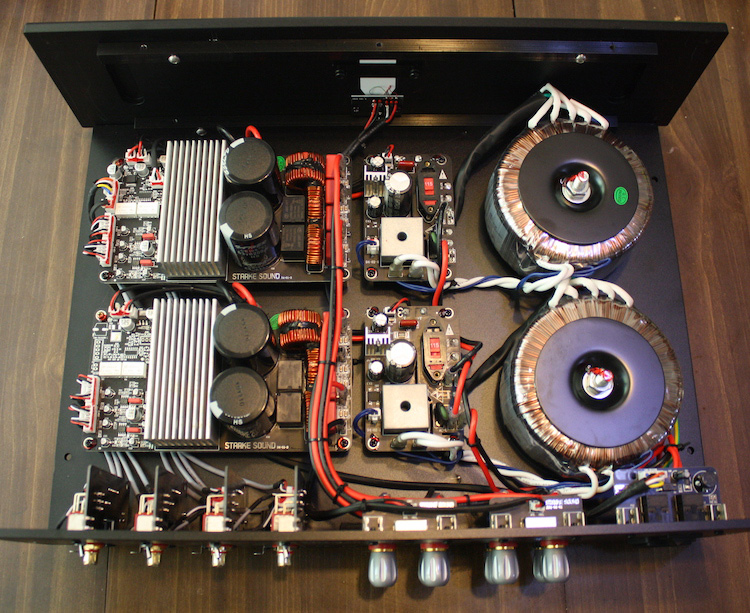
The conclusion of the Starke Sound AD4.320 vs Thiel 5i experiment proves that this amplifier is no flash-in-the-pan. Nor is it just a synergistic fluke with my Emotiva T2 speakers that makes me like the amp so much. Despite the Thiels’ incredibly complex crossover and low impedance dips, the Starke amplifier controlled the 5i speakers really well and sounded good while doing it.
–Glenn Young–





